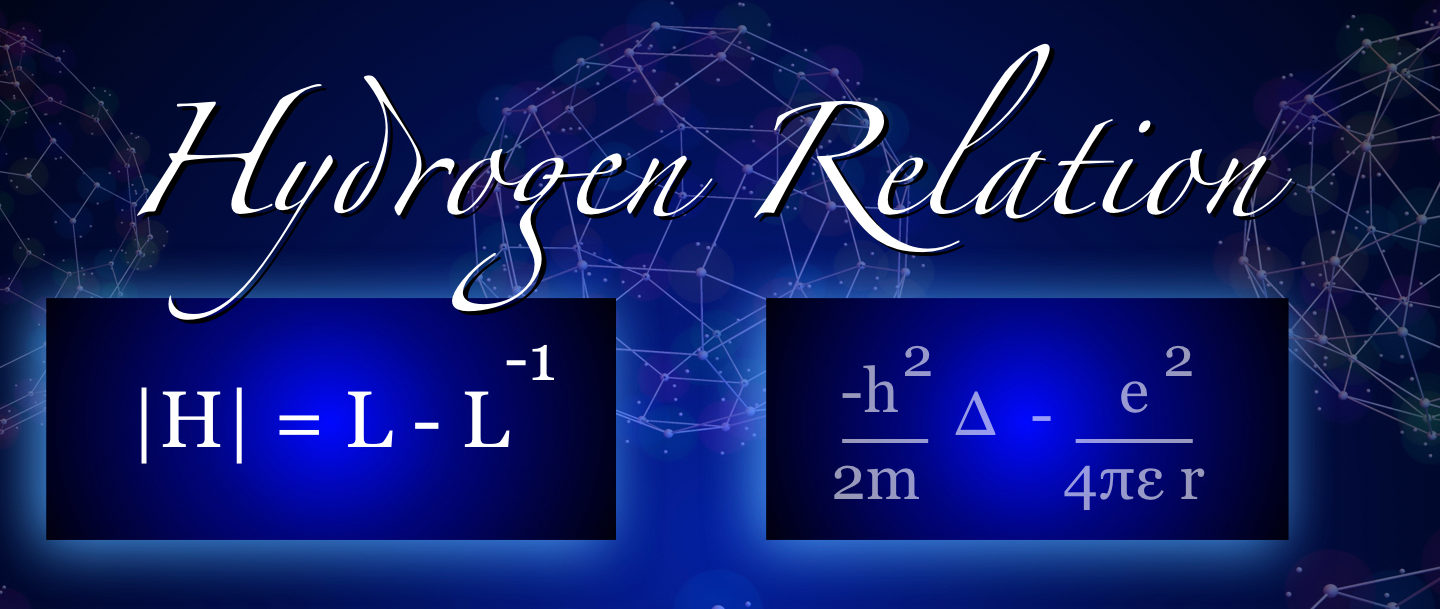The Hodge operator $H=(d+d^*)^2$ has a sign-less cousin $|H|$, in which the exterior derivative $d$ is replaced by a sign-less version. While |H| is similar to H if G is a bipartite one-dimensional complex, the eigenvalues in general disagree. Any simplicial complex G comes with the connection Laplacian L, which is a $n \times n$ matrix if G has n elements. We prove that for a one-dimensional simplicial complex G in general, the Hydrogen relation
| $L – L^{-1} = |H|$ |
holds. In this paper [PDF], we explore some consequences of this identity. As one has related the spectrum of L and the spectrum of |H|, one can use the spectrum of the 0-1 matrix L to get information about the spectrum of |H| and so, about the spectrum of H.
I first thought that this produces quite spectacular results until a literature search revealed the paper of Anderson and Morely from 1985. That paper already made use of the spectral super symmetry which assures that the nonzer0 eigenvalues of $H_0 = d^* d$ and $H_1 = d d^*$ are the same. It is a simple linear algebra fact but this relation generalizes to the general Mc-Kean-Singer spectral symmetry. And it already produces a relation between the spectrum of the Kirchhoff Laplacian $H_0$ and the 1-form Laplacian. Why is the 1-form Laplacian nice? Because it is just a shifted adjacency matrix of the line graph of $G$.
Still, the Hydrogen identity can lead to more information. As indicated in the paper, the Schur inequality for example can help.
But there is a bit more excitement coming when we look at the solution $L^n \psi$ of the random walk diffusion. Now, first of all, the time $n$ can be an arbitrary integer as $L$ is invertible. If we square the Hydrogen identity, we get
| $L^2 -2+ L^{-2} = |H|^2$ |
which is a type of Laplacian equation. If $\psi(n)=L^n \psi$, then $\Delta \psi = |H|^2 \psi$, where $\Delta$ is a Laplacian. If we interpret the left hand side as a second order time derivative and the right hand side as the negative of a space Laplacian, we have a space-time Laplace equation.
We can now look at this as a dynamical system. It is especially exciting if the real numbers are replaced by a finite field, as we have now a cellular automaton. The random walk is special because it is reversible and because the state at a particular time and place is given summing up over paths on the graph.
We also point out that the hydrogen relation goes over to infinite dimensions and that it is robust in the sense that if $H$ is perturbed then we can (using the implicit function theorem) still find an $L$ which satisfies the relation.


